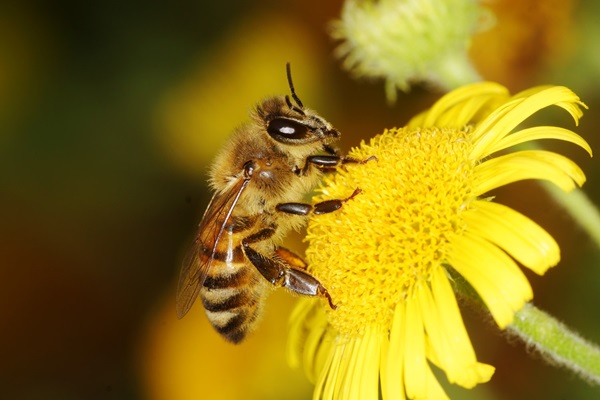Not all insects are harmful to your home or garden. In fact, some bugs are downright beneficial. Beneficial insects fall into three different categories: predators that eat harmful bugs that can damage your home or garden, pollinators that fertilize flowers, and recyclers that decompose waste.

This Thanksgiving, let’s give thanks to these under-appreciated, beneficial insects.
Predators That Eat Harmful Bugs
Ladybugs
Ladybugs, (also known as lady beetles), eat several pests that can damage your garden, including aphids, mites and scale insects. A single ladybug may eat as many as 5,000 aphids during its lifetime.
Ladybug larvae look like tiny, spiny black alligators with orange spots. They're harmless to people, but they eat about 400 medium-sized aphids in the two- to three-week period before they change into pupae.
Spined Soldier Bugs
The spined soldier bug, named for the prominent spines found on each shoulder, attacks more than 100 different pests, including the larvae of several species of crop beetles (grubs), caterpillars and worms that destroy crops. While you’re enjoying mashed potatoes at Thanksgiving dinner, take a moment to appreciate the spined soldier bugs that protected the potato crop.
Green Lacewings
Green lacewing adults and larvae eat aphids and other garden pests, as well as whiteflies, moths and spider mites. Green lacewing larvae, nicknamed “aphid lions,” have ravenous appetites, so they start looking for insects on vegetables and flowers in your garden as soon as they hatch.
Praying Mantises
The praying mantis uses its long appendages to grab and hold onto its prey with a vice-like grip. The praying mantis is a general predator that attacks a wide variety of insects when it's hungry. To satisfy its voracious appetite, it eats pests like mosquitoes, flies and moths.
Pollinators That Fertilize Flowers
Bees
Bees are the main insect pollinators of crops grown for their fruits, nuts, seeds, fiber and hay. Honey bees account for about 80 percent of all pollination in the United States, and bees are said to be responsible for one out of every three bites of food we eat. That means bees helped make your Thanksgiving dinner possible!

Bees also produce several useful and potentially beneficial products:
- Honey. Though studies have not confirmed, local honey is sometimes said to alleviate allergies. Unfortunately, studies have shown that honey doesn’t reduce allergy symptoms. Either way, you can still enjoy the sweet taste of honey, thanks to hardworking honey bees.
- Royal jelly. While there is insufficient evidence that royal jelly is effective for treating most medical condition, royal jelly has been used to treat hay fever, insomnia, menopausal symptoms, high cholesterol and other medical conditions. Royal jelly is a milky secretion produced by worker honey bees and fed to bee larvae. It gets its name from the fact that honey bees use it to develop and nurture queen bees. You should not use royal jelly if you have asthma or allergies to bee products.
- Beeswax. Beeswax is used as a base for ointments, polishes and candle-making. 40 percent of all beeswax is used to make cosmetics, such as creams, lotions and lipsticks.
- Bee pollen. Though scientists haven't confirmed that bee pollen has all claimed health benefits, it is often touted as a nutritious food. Bee pollen comes from the pollen that collects on the bodies of bees.
Pollen Wasps
While pollen wasps may look similar to other types of wasps, they have different behaviors. These wasps are known for being more solitary than other wasps and don't seem to prefer living in a colony. Instead of spending their time feeding on other insects, they prefer to pollinate certain plants and flowers. This pollination is an important part of the plant life cycle.
Recyclers that Decompose Waste
Dung Beetle
Dung beetles can be found in areas where animal manure is common because that is their primary source of food. They also roll the manure into balls for the female beetles to lay their eggs in. While this may seem unappealing to many people, dung beetles provide many benefits to the ecosystem. For example, they help improve soil quality and remove excess animal manure that would otherwise build up.


